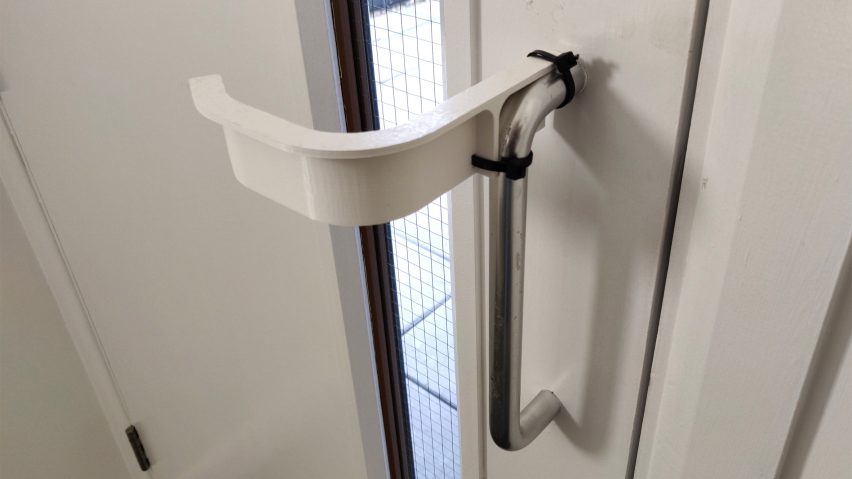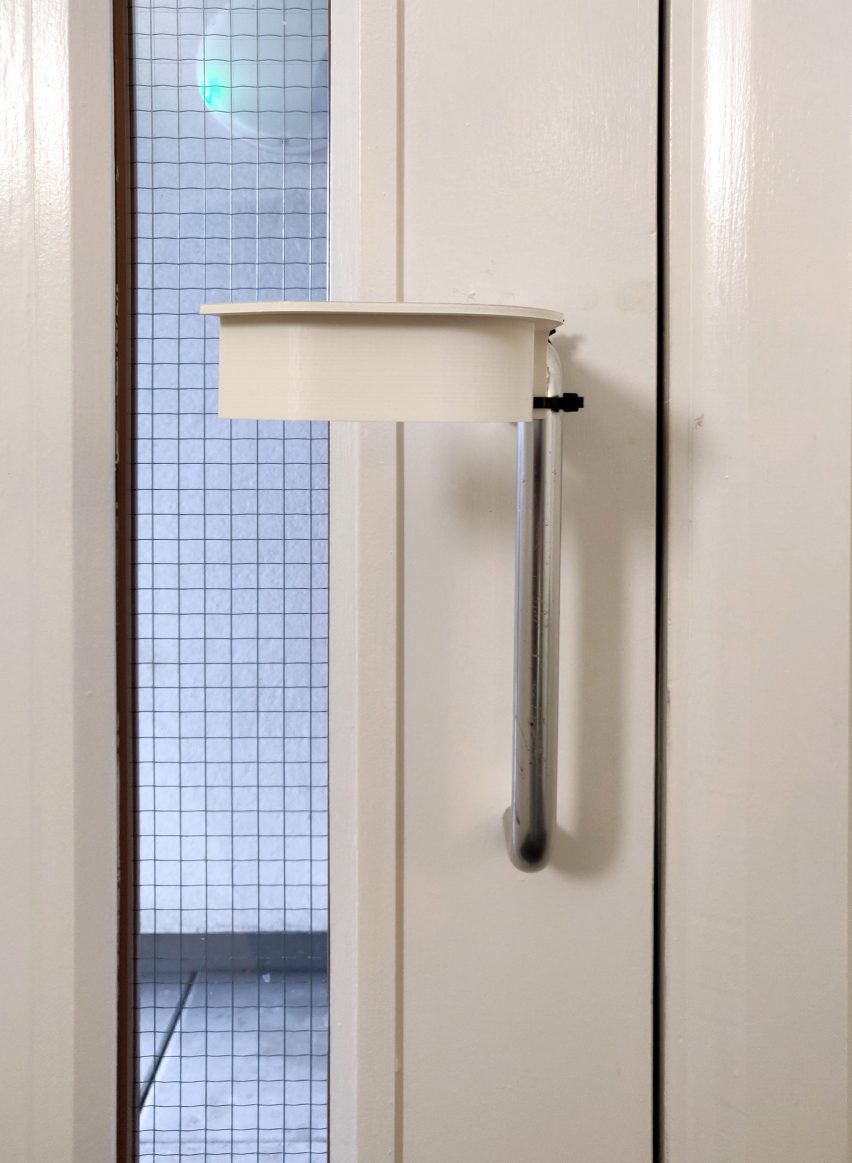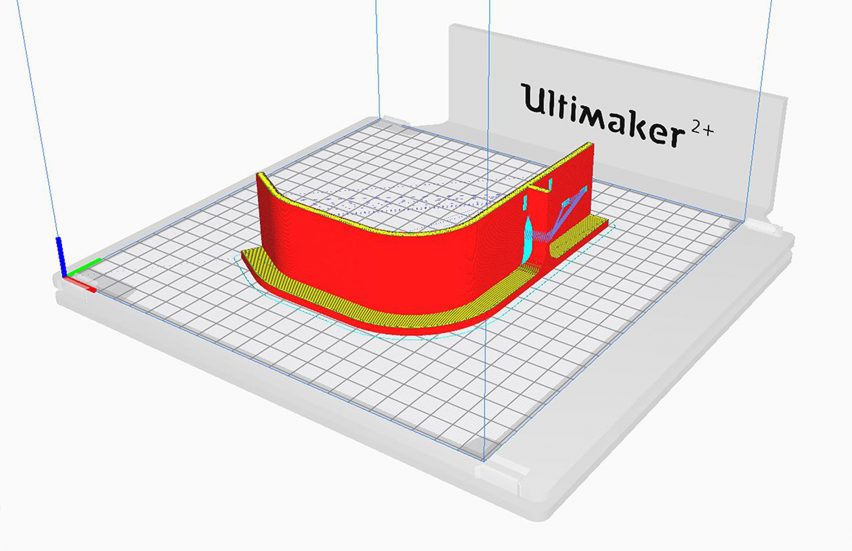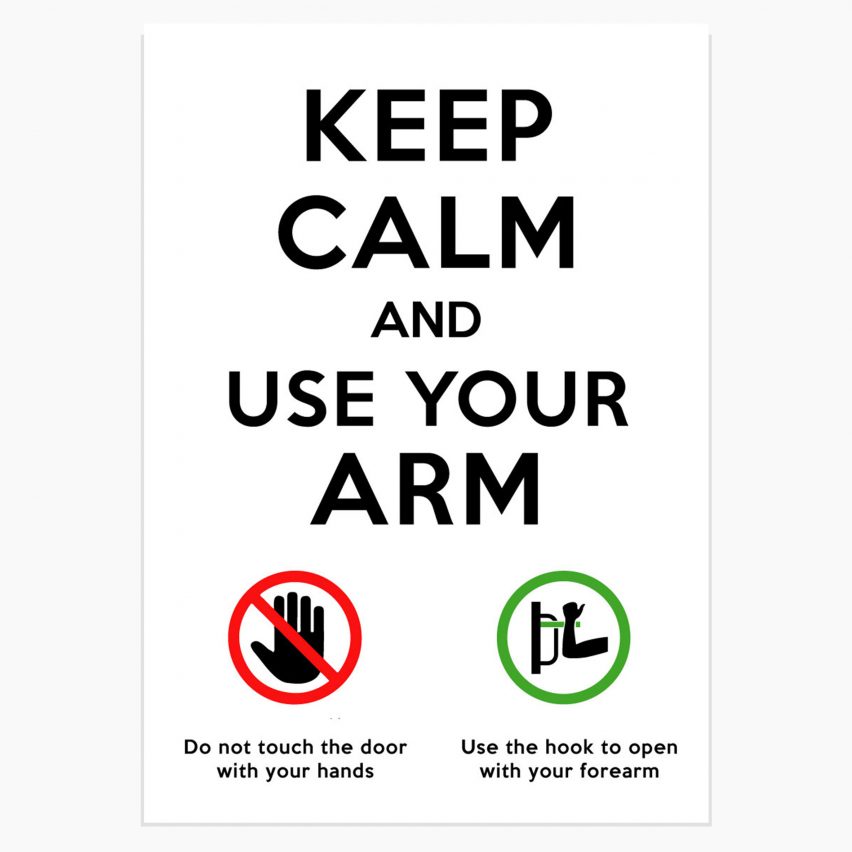
Architectural designers develop hands-free door handle to prevent spread of coronavirus
Architectural designers Ivo Tedbury and Freddie Hong have created a 3D-printed device that adapts door handles for hands-free opening, in a bid to help prevent the spread of coronavirus.
Tedbury and Hong, who met while studying architecture at the Bartlett School of Architecture, designed a curved plastic device that attaches onto "fire escape-style" pull door handles via a pair of cable ties.
The idea is that instead of opening the door with their hands, users loop their arm through the adaptor and pull the door open.
The duo came up with the design as a way to respond to outbreaks of Covid-19, which can reportedly last on some surfaces for days and is spread by human touch.
"I live in a block of flats and was frustrated at the number of shared doors between my flat and the outside world," Tedbury told Dezeen. "If you're going out to buy groceries, you might end up with contaminated hands within 30 seconds."
"Not being medics or involved in other front line services, we were happy to try to help fight the coronavirus in other ways."

The design of the device, which can be 3D-printed in under three hours, is available to download for free on a platform called Hands-Free Architecture. It comes with a poster that can be printed to show how to use the handle.
In addition to releasing the Open Source handle adaptor, Tedbury and Hong set up Hands-Free Architecture as a provocative platform to encourage others to share ways to respond to the current pandemic.
"To help fight Covid-19, our interactions with the built environment need to go 'Hands-Free'," they said. "We're sharing designs for adaptor kits to reduce physical contact with shared surfaces in buildings."
"What simple things can we do to temporarily 'invert' architecture and design norms?" Tedbury added.

Tedbury said that while unable to fight on the medical front, architects and designers are able to adapt the built environment to make safer spaces that could prevent the spread of the virus.
"It's also meant to be a bit of provocation – the majority of existing architecture and design is geared towards bringing people together to enable human interactions (on a group scale), and centering our personal physical interactions with the built environment around our hands (on an individual scale)," Tedbury said.

"In the time of the coronavirus pandemic, both of these are actively unhelpful," he continued.
A number of architects and designers have come up with creative solutions to problems caused by the coronavirus crisis.
Italian architects Carlo Ratti and Italo Rota have designed an intensive-care pod within a shipping container that could be added to hospitals fighting the pandemic.
Graphic designers have also developed images of support and informative illustrations that advise on how to slow the spread of the virus.